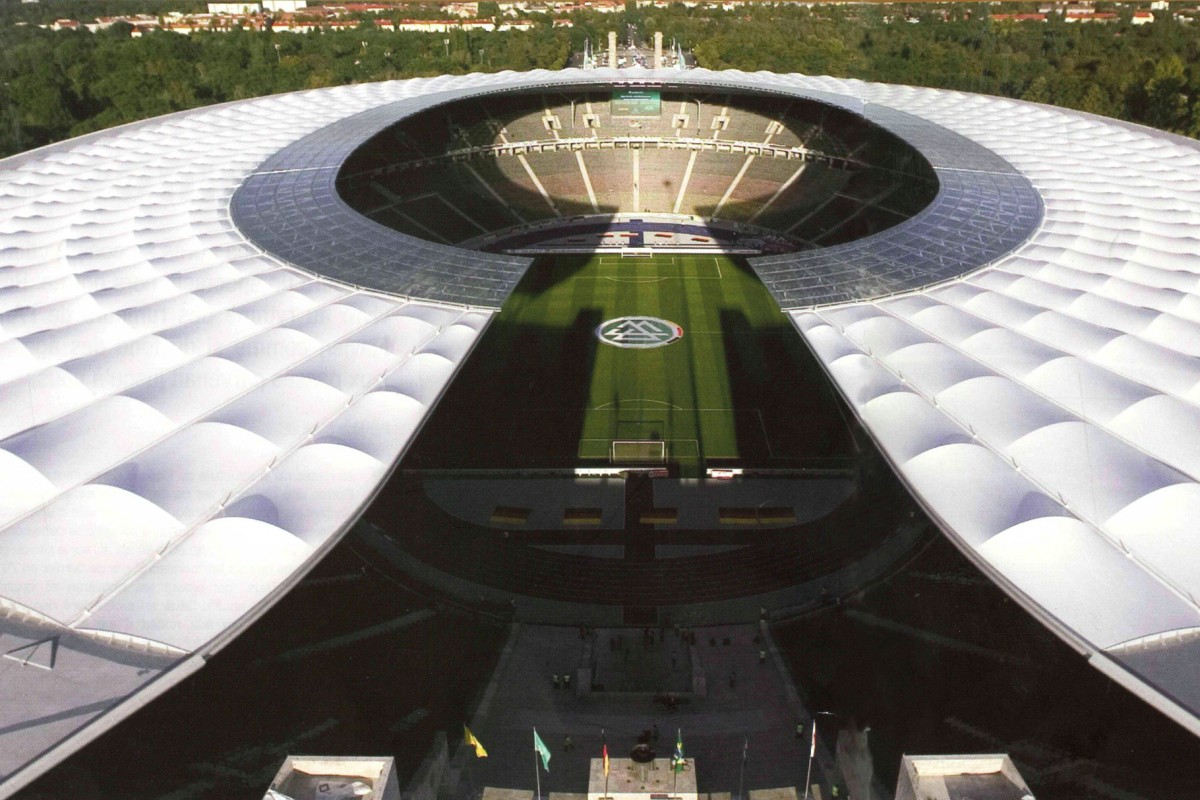FABRIC ARCHITECTURE
An airy, light architecture for beautiful projects.
LEADING FABRIC ARCHITECTURE TECHNOLOGY
Engineered fabric architecture is a modern and stylish technology that has been used on major international constructions including sports stadiums, outdoor learning areas and special purpose sports facilities:
- London’s Olympic Stadium in 2012.
- Marseilles’ Olympic Stadium in 2013.
- Kuala Lumpur’s Formula One circuit in 2002.
The membranes used in these structures are chosen for their translucence, freedom of shape and technical performance :
- High mechanical resistance
- Thermal quality
- Acoustic quality
Implemented on either steel or wood frameworks, fabric membranes are fully recyclable.

Berlin Olympic Stadium
This stadium was not built by SMC2, it is merely cited as an example
TECHNICAL PROPERTIES
Fabric membranes are made of polyester woven yarns treated with PVC and a dirt-repellent varnish. On average, their properties are as follows :
- Thickness: 1-2mm
- Weight: 700 -1,500g/m2
- Traction resistance 300-800daN/5cm in both directions
- Colour: white or specified colour
- Translucence 5-30%
- Fluoride polymer based dirt-repellent varnish
- 15-year product guarantee
Canvas properties are defined for each specific project after calculating breaking strength according to the tension induced by local weather conditions.
DESIGN STANDARDS – BEST PRACTICES
In compliance with the recommendations of the European Design Guide for Tensile Surface Structure, fabric envelope covers must be implemented with an inverted double curve to ensure perfect mechanical stability and long life.
- Home |
- Fabric Architecture







